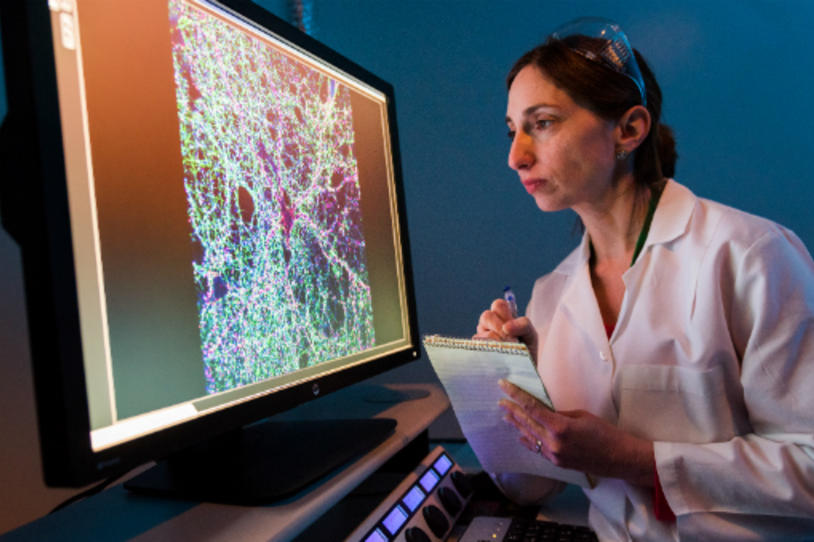
Earlier this week, the U.S. Food and Drug Administration (FDA) approved Boston Scientific's Vercise deep brain stimulation (DBS) system for Parkinson's disease. This device has been available in Europe since 2012, but now joins Medtronic's Activa and Abbott's Infinity DBS devices on the U.S. market.
All DBS systems have the same basic components and work in similar fashions. A battery, or neurostimulator, is placed in the chest, and sends electrical impulses through thin wires, or leads, that are implanted in brain areas that control movement. Although researchers aren't certain exactly how DBS works, the electrical stimulation is thought to correct misfiring of brain cells to ease Parkinson's motor symptoms. (Read more about deep brain stimulation.)
We talked with Svjetlana Miocinovic, MD, PhD, assistant professor of neurology at Emory University in Atlanta about the new system, how it compares to the previously available ones and how doctors choose which one is right for you if you're a candidate for DBS.
MJFF: How does the Vercise differ from the currently available systems?
Svjetlana Miocinovic (SM): Let's start with how it's the same. Fundamentally, all DBS systems do the same thing: deliver electrical stimulation to the brain to lessen Parkinson's symptoms. Variations between devices are not drastic differences, but can be viewed more as "tweaks" to potentially enhance benefits and lessen side effects.
Vercise's leads (wires that are implanted in the brain) contain more points (eight vs. four) through which electrical stimulation can be delivered. Physicians can more selectively control this electrical stimulation, which could limit side effects.
The Vercise also has a rechargeable battery, which could last up to 15 years. This may mean fewer replacements over time. (Medtronic offers this option as well.) The Vercise DBS is not compatible with MRI, meaning you cannot undergo MRI if you have this system. (Medtronic is the only DBS system that is safe for MRI under certain conditions.)
MJFF: Why are more DBS systems a good thing?
SM: Not only does this give doctors and patients more options, it spurs competition and innovation. Researchers are motivated to go beyond "tweaking the same theme" to create the next generation of devices, even systems that could program or adjust stimulation themselves to modulate symptoms.
MJFF: How do patients and doctors decide which DBS system is right for them?
SM: Deciding on a specific device comes down to a few things. Do you want (and can you handle the regular maintenance of) a rechargeable battery? Do you have other medical conditions, such as spinal problems, that will require future MRIs? Are you able to undergo DBS placement while awake (the standard procedure) or do you need to be asleep? (Only Medtronic can be implanted, under MRI guidance, while asleep.) Your movement disorder specialist and neurosurgeon may have more experience and comfort with certain devices and choose those for specific reasons (e.g., ease of lead placement, programming, etc.). The three systems have not been compared head-to-head in a clinical trial, so it's unclear if one works "better" than another.
MJFF: What's the future of DBS?
SM: I think in the next five to 10 years we are going to see "smart" DBS devices that can do a lot more. Hopefully they can take some of the trial and error out of programming. I always say surgery is the easy part; it's the three to six months of frequent doctor visits after that, where we program the device and fine-tune settings, that can be hard. Imagine devices that could program themselves or even take some of the guesswork out of programming by adjusting to a person's brain signals and symptoms. That's part of the near future of DBS.
DBS Is an Active Area of Parkinson's Research
Other goals of current DBS research include treating a wider array of symptoms and a broader population of people. One MJFF-funded study is looking to figure out the best level of electrical stimulation to target swallowing and gait problems. Another MJFF-supported trial is recording individuals' unique electrical signals to understand more about depression and impulse control disorders and develop targeted treatments. And, we're working to fund investigators to establish a DBS registry to serve as a database of real-world, practical information on DBS (which patients get DBS for what symptoms, where leads are put in the brain, what the long-term outcomes are, etc.). "These collective efforts may provide novel insights and a more holistic understanding that can help doctors and researchers optimize DBS," says Jamie Hamilton, PhD, associate director of research programs at MJFF. She adds, "In the right candidate, deep brain stimulation can be a powerful treatment to ease symptoms and improve quality of life. What if more people could benefit from it in the future?"
Watch a webinar on deep brain stimulation.
Sign up for Fox Trial Finder to match with DBS and other Parkinson's studies.
